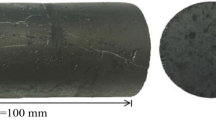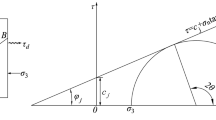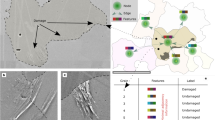Abstract
IN polycrystalline material1 general deformation by slip requires co-operative slip by five independent systems. Graphite is known to deform easily by slip along its basal plane2, but such slip contributes only two independent systems. Other deformation mechanisms, such as non-basal plane slip, grain boundary sliding or cracking, twinning, or intracrystalline cracking must therefore operate in conjunction with basal plane slip. A series of experiments was designed to determine whether basal plane slip or some other deformation mechanism was the rate controlling mechanism during creep. The dependence on orientation of the creep rate of heavily oriented graphite (ZTA, National Carbon) was used for these experiments. By applying the same tensile stress to samples the axes of which were inclined at different angles to the average c-direction, different combinations of resolved shear stress and tensile stress were applied along the basal planes, “c”-axes, and the different kinds of grain boundaries, thereby causing different creep rates.
This is a preview of subscription content, access via your institution
Access options
Subscribe to this journal
Receive 51 print issues and online access
$199.00 per year
only $3.90 per issue
Buy this article
- Purchase on SpringerLink
- Instant access to full article PDF
Prices may be subject to local taxes which are calculated during checkout
Similar content being viewed by others
References
Taylor, G. I., J. Inst. Met., 62, 307 (1938).
Amelinckx, S., and Delavignette, P., J. App. Phys., 31, 2126 (1960).
Green, W. V., Carbon, 4, 81 (1966).
Green, W. V., and Zukas, E. G., Proc. Electrochem. Soc. Symp. on Carbon, Cleveland, 1966 (in the press).
Author information
Authors and Affiliations
Rights and permissions
About this article
Cite this article
ZUKAS, E., GREEN, W. Dependence of Rate of Creep on the Orientation of the Tensile Axis for Heavily Oriented Graphite. Nature 212, 1454–1456 (1966). https://doi.org/10.1038/2121454a0
Received:
Issue date:
DOI: https://doi.org/10.1038/2121454a0
This article is cited by
-
High-temperature creep and resultant anisotropy in ultrasonic velocity in isotropic graphite
Journal of Materials Science (1994)
-
Creep of ceramics
Journal of Materials Science (1983)
-
Stress Dependence of Tensile Creep Rate in Carbons and Graphites
Nature (1968)



